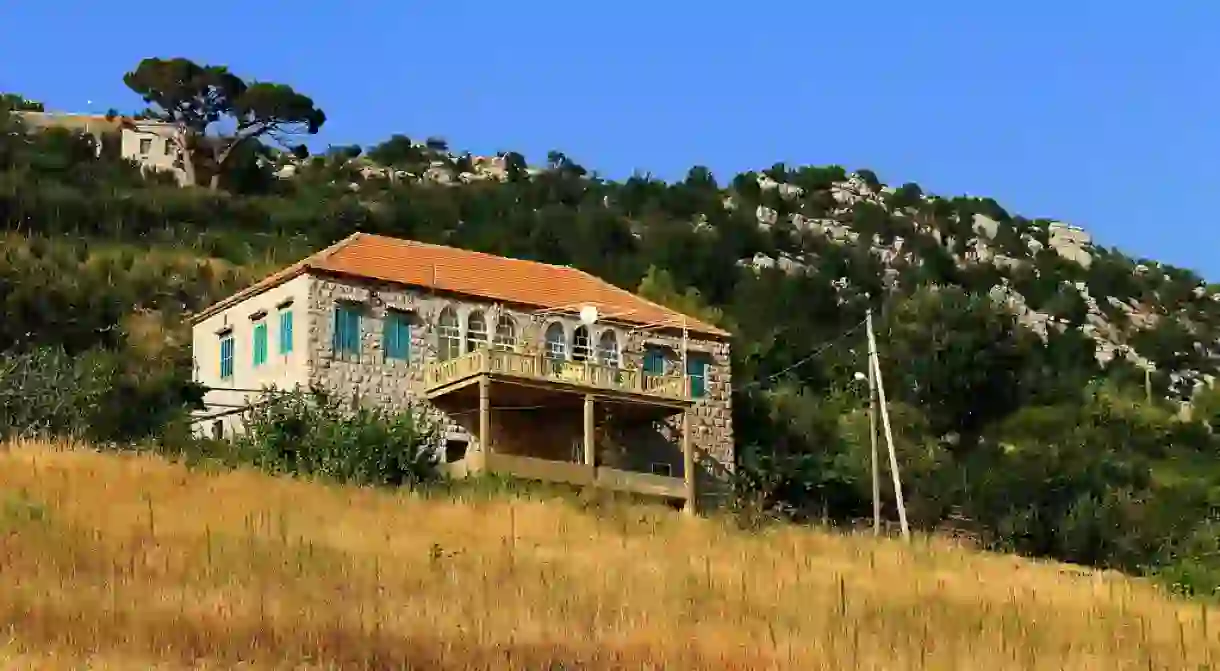10 Inspiring Décor Ideas From Lebanon

In a country that has faced one colonization after the other, it is hard to find influence that is distinctly Lebanese—other than tabbouleh, which is still debatable. What the locals do best, however, is take what others gave them and make it their own. Here are 10 décor ideas the Lebanese have perfected.
Arabic seating
What characterizes any Arabic-style home is a room with cushion seating, which is different in that it has no chair-like structure and is made in such a way that people line up on two sides, with the elder sitting at the top center, as shown in the image below. These seats are usually elevated by stone or wood, much like an extended window seat. In the Gulf, the custom is for the cushions to be on the floor in a circle or square, usually without anyone in a top position. Today, this aesthetic is still alive in many homes, especially rural homes (Lebanon and Syria) and in khiyams (a type of tent in most Gulf countries).

Stone galore
If there is anything the people of the Lebanese countryside have perfected, it is white or beige stone homes. In many villages, this stone covers all the homes, which is a staple of Lebanese architecture. That could be because people built many of the villages into the mountainsides of vast greenery, and stone might have been abundant and would have proved long-lasting, especially in Lebanon’s humid weather. Wooden homes are almost non-existent in the country, except for cottages.

Stone carving
With stone homes, you will find stone decoration. A lot of the houses will have a stone cross or Islamic name (usually “Allah” and “Mohammed”) hung on or carved into the exterior of the structure—most likely above the main door and not too big. Of course, many people choose other designs, as the possibilities are endless.

The forbidden room, a.k.a. salon
You most likely didn’t grow up in a Lebanese home if you didn’t have a salon—a room decorated like a museum and exclusively used to entertain guests. This room, left over from French colonialism, is usually beautifully adorned with either French or Arabic themes (see Arabic seating). It is a space reserved your mom’s best antique finds and uncomfortable but aesthetically pleasing chairs. All we know is, as children, breathing beside the salon was a crime.

Wood aplenty
To furnish the salon, many Lebanese people opt for a wood-rich aesthetic. The furniture can be Arabic in style, which is found more frequently in upper-class rural homes. This furniture is usually a wooden work of art with carved lines and mosaic patterns. The other type is foreign-style furniture straight from the Golden Age of French woodwork. This type is found mostly in city apartments and old Lebanese mansions. Some people even mix the two aesthetics, creating a visual representation of Lebanon’s diverse background.

Crystal everywhere
People highly value crystal decoration in Lebanon. Think back to the salon—that room will have the best crystal chandelier your mother could find or that she inherited. Also, for Islamic marriages (and possibly others), guests receive crystal figurines as favors. People then display them exclusively in the salon, adding to their “household museum.”

Creative accessories
A lot of Lebanese people like to bring their heritage into the home by decorating with things that are usually not used as decorations. In many residences, you’ll find vintage Ottoman-style rifles, swords and knives hung on the wall or old kettles and compasses displayed on a table. These pieces make the home what it is, highlighting the family in question’s history.

Ottoman architecture
Of course, with years of being under Ottoman rule comes extreme influence. From furniture and food to architecture, Lebanon definitely carries its Ottoman heritage with it visually. Outside the stone houses, in cities such as Beirut and Tripoli, you might notice buildings that are of 20th-century French- or Ottoman-style architecture, and sometimes it’s a mixture of both! Look out for these gems as you walk down the streets.

Outdoors lighting
Many rural homes in Lebanon use lantern-style chandeliers as lighting. The idea is beautiful and offers a more authentic feel to sitting outside. Being in nature is also valued in the countryside, and these lights ensure that you’ll always have the full Lebanese experience.

Huge doors and archways
Today, many homeowners in the Lebanese countryside, or people building villas, try to emulate the classic stone home. Similarly, they like to include the even more classic archways and doors, and in many of these homes, you’ll notice at least one huge door shaded by an arch to indicate the entrance. Windows then are made to follow suite with arches and odd angles. Also, windows are usually barred with metal—sometimes for safety but mostly to pay homage to the old Lebanese aesthetic. If you place bars on the windows of your own future stone house, maybe you’ll feel like you’re in a Lebanese castle.














